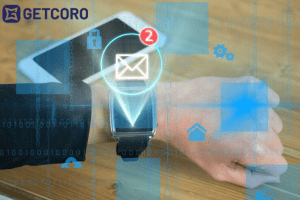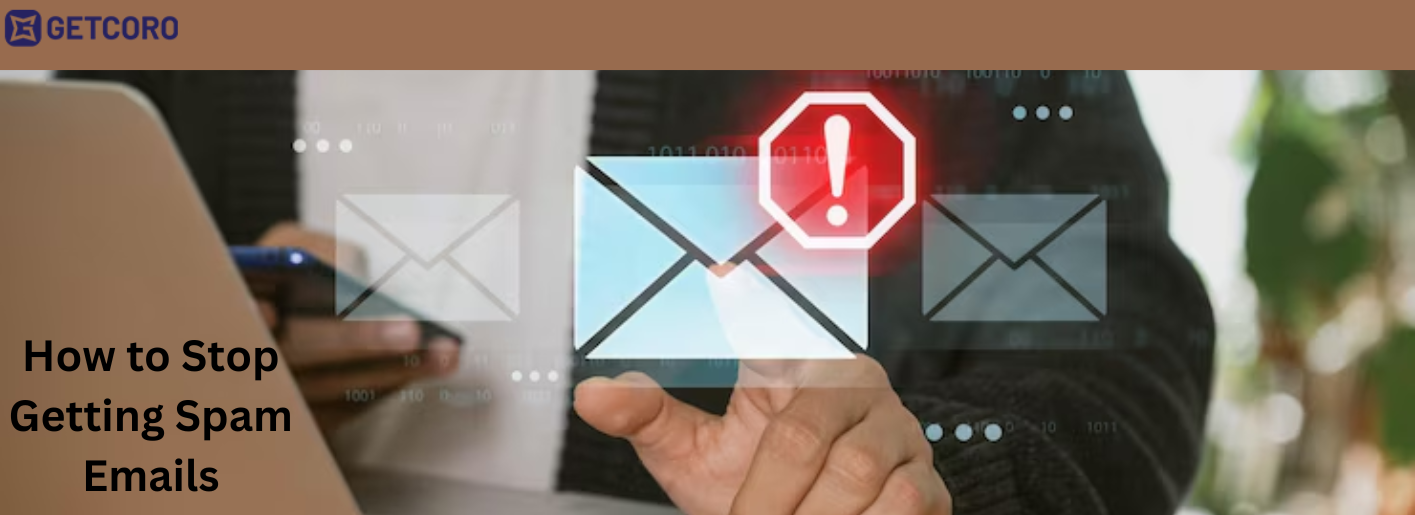In today’s interconnected world, email has ended up in a fundamental shape of verbal exchange.
However, there’s a diffused hassle hidden inside the midst of proper correspondence:
Spam floods our inboxes, cluttering our digital space with undesirable commercials, phishing attempts, and scams.
Spam emails not only devour valuable time and interest, but in addition, they also pose private privacy and safety dangers.
Fortunately, individuals can take proactive steps to forestall the inflow of junk mail and regain management in their inboxes.
In this guide, we’ll discover powerful ways to lessen the flow of unsolicited mail electronic mail.
From strict filtering techniques to shielding personal records, each approach offers safety against undesirable messages.
Additionally, we will delve into the reasoning at the back of spamming techniques, empowering readers to distinguish between legitimate emails and fraudulent solicitations.

By adopting a proactive approach and enforcing the encouraged techniques, individuals can appreciably reduce the extent of spam emails they receive, creating a greater streamlined and stable digital communication revel in.
Join us as we embark on an adventure to reclaim the management of our inboxes and thwart the incessant onslaught of junk mail.
What do you mean by Spam Email?
Spam email is an unsolicited message, commonly sent to more than one recipient in bulk for marketing purposes or to spread malicious or phishing efforts.
These emails flood inboxes with undesirable content, regularly promoting fraudulent merchandise, offerings, or applications.
They are regularly sent overseas indiscriminately without the consent of the purchaser, inflicting resentment, wasted time, and capacity security dangers.
If you are new and don’t understand that there is a guide to understanding the cyber threats
These messages can get cluttered in electronic mail inboxes, making it hard for users to locate the right files.
Additionally, junk mail emails can contain malicious hyperlinks or attachments designed to damage the recipient’s device or scouse borrow touchy facts.
Recognizing the spread of spam emails, many electronic mail carriers have carried out junk mail filters to robotically stumble on such messages and pass them to a unique folder or block them altogether.
Despite anti-spam efforts, that is an ongoing difficulty for email customers around the world.
Both individuals and businesses must be vigilant and enforce satisfactory practices to protect themselves from the dangers posed by using junk mail emails, inclusive of warding off clicking on suspicious links.
If security software they will replace frequently, any suspicious hobby on their email provider, and offer feedback.
Understand What is Common Spam Email Security Threats
Common junk mail and e-mail security threats include techniques used by malicious actors to mislead users and compromise their protection.
Common threats include:
- Phishing: Phishing emails masquerade as a valid entity, together with banks or reputable organizations, to trick recipients into revealing sensitive data consisting of passwords or credit score card numbers. These emails often contain emergency requests to trigger emergency motion or alarm messages.
- Distribution of malware: Spam emails frequently bring attachments or hyperlinks to malicious software, which includes viruses, ransomware, or adware. Opening those attachments or clicking on links can infect the recipient’s device, causing records loss, cash theft, or device crashes.
- Spoofing: Spoofing involves forging the sender’s e-mail address to make the message appear to come back from a trusted supply. This method aims to trick electronic mail recipients into believing the email is legitimate, raising the possibility of them falling for a scam or freely giving sensitive facts.
- 419 scams: Also known as improve charge fraud or Nigerian prince scams, these emails promise large sums of cash in trade for small invoices or non-public information. Victims who respond to these scams can lose out on cash or focus on recycling.
- Fake Promotions: Spam emails often promote faux offers or promotions to entice recipients to click the link or make a buy. These emails may also advertise fake products, fraudulent services, or fraudulent economic possibilities.
- Social Engineering: Some unsolicited mail emails use mind-manipulation techniques to manipulate recipients into performing specific movements, which include revealing passwords or the usage of wire transfers or social engineering techniques human emotions, self-belief, or interest are used to achieve evil desires.
To mitigate this chance, users have to exercise caution in interacting with unsolicited emails, heading off, and clicking on suspicious hyperlinks or attachments.
Robust internal security features like spam filters, antivirus software, and updates are crucial against email threats.
User training and quick response are vital for effective detection and mitigation.
What is the Nature of Spam Emails?
Before diving into answers, it’s essential to apprehend what spam e-mail is and the way it unearths its manner into your inbox.
Spam emails are unsolicited messages, usually sent with commercial motives or malicious purposes. They can come from various sources, including:
- Mass Mailing Lists: Spammers gather email addresses from public places like websites, forums, and social media platforms to create mailing lists.
- Data Breaches: Hackers can obtain email addresses through statistics breaches or leaks from compromised websites or databases.
- Automated Packages: Spammers use computerized software to quickly generate and send unsolicited mail emails.
- Phishing Assaults: Some junk mail emails masquerade as valid messages to trick recipients into revealing private records or downloading malware.
Effective Strategies to Stop Getting Spam Emails
Use Spam Filters
Most email services use built-in spam filters that discover unsolicited mail emails and circulate them to other folders.
Make certain to enable and configure your spam clearout settings.
Be Cautious with Your Email Address
Refrain from sharing your email address publicly on websites, boards, or social media structures if essential.
Spammers often scour those resources for email addresses.
Additionally, recollect developing separate email addresses for distinct purposes (e.g., private, enterprise, purchasing) to reduce exposure to spam.
Unsubscribe from UInwanted Emails
Legitimate advertising and marketing emails commonly have an unsubscribe option at the bottom.
Use this option to unsubscribe from mailing lists you don’t need to receive email from.
But be careful when opting out of unfamiliar and suspicious emails, as it can confirm the legitimacy of your electronic mail to spammers.
Use disposable email addresses
Consider the use of disposable email addresses or brief email services whilst signing up for online events, newsletters, or promotions.
These drop addresses can be dropped whilst you begin receiving junk mail, preserving your essential inbox smoothly.
Use email authentication guidelines
Use electronic mail authentication guidelines inclusive of SPF (Sender Policy Framework), DKIM (DomainKeys Identified Mail), and DMARC (Domain-based Message Authentication, Reporting, and Conformance) to make certain incoming e-mail is actual. This covers email spoofing and phishing attacks They assist prevent.
Install anti-junk mail software
Install an anti-spam software program or popular email protection solutions in your devices to detect and block junk mail emails earlier than they reach your inbox. These gears commonly provide superior functions such as real-time scanning, heuristic analytics, and customizable filters to beautify security.
Update your email client regularly
Keep your email customer or utility aware of the ultra-modern safety patches and updates. Software carriers frequently release patches to deal with vulnerabilities that spammers can take advantage of to infiltrate electronic mail structures.
Educate yourself and others
Make them privy to common junk mail email techniques, together with phishing scams, deceptive offers, and malware delivery techniques. Educate yourself and your peers on quality practices for figuring out and avoiding unsolicited mail emails to lessen the threat of falling victim to a cyber chance.
How To Block and Report Spam Emails
Blocking and reporting spam emails can assist lessen undesirable messages and may defend yourself and others from phishing tries or different malicious hobbies.
Here is a grade-by-grade manual on the way to block and file unsolicited mail emails:
Use Junk Mail Filters
Most email services use integrated spam filters that pick out suspicious emails and course them into a separate unsolicited mail or junk folder. Make sure your unsolicited mail clearout is enabled and configured well.
Mark Emails as Unsolicited Mail
When you acquire spam electronic mail in your inbox, mark it as unsolicited mail. This system enables educating your e-mail company’s spam filter to understand comparable messages in the destiny.
Block Sender
Many electronic mail services let you block a particular electronic mail address or area. When you block the sender, you block future emails from reaching your inbox.
Report unsolicited mail
Reporting junk mail emails to your email provider helps them enhance their unsolicited mail filtering algorithms and may even blacklist the sender’s area or electronic mail to cope with your email purchaser’s “Report Spam” or In “Report Phishing”. Here are your options.
Use Third-Party Spam Filtering Tools
Consider the usage of third-party junk mail filtering tools or services for added protection. These gear commonly offer superior capabilities and customization alternatives to effectively block undesirable emails.
Avoid clicking on hyperlinks or downloading attachments
Be cautious while dealing with suspicious emails. Avoid clicking on any links or downloading attachments from unknown senders, as they may contain malware or phishing websites.
Check email settings frequently
Check your email settings periodically to make sure your spam filter is working and nicely configured. You can adjust your filter sensitivity stage to fit your possibilities.
Report phishing attempts
If you acquire an electronic mail that appears to be a phishing try (i.e., trying to scouse borrow your non-public statistics), file it to the proper authorities Most email companies inside the form of reporting phishing emails happen immediately.
Educate yourself and others
Become aware of the most unusual ways to get out of phishing and educate yourself and others (along with co-employees or your own family members) on the way to understand and keep away from turning into sufferers of unsolicited mail and phishing scams.
Final Words
While spam emails may seem inevitable, implementing emergency response measures can significantly reduce their impact on your inbox.
Use junk mail filters, be cautious with your e-mail deal, opt out of undesirable electronic mail, the usage of drop-off addresses, the usage of electronic mail authentication protocols, install anti-spam software, and keep your email consumer updated.
Using staying privy to spam electronic mail channels, you may efficaciously stop receiving junk mail emails and have a purifier and more secure e-mail.
Staying vigilant and proactive is essential to minimize the risks of spam emails and safeguard your online privacy.
Read More Blogs Related To Cyber Security
Tags: Anti Virus, Cloud Security, Cyber Attacks, Cyber Security, Data Encryption, encrypted connection, Privacy protection, Ransomware Attacks, Security danger, Spam Emails, Strategies for Ransomware, The Role of Artificial Intelligence, Wi-Fi Security